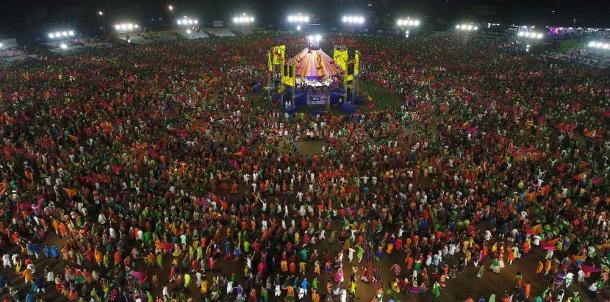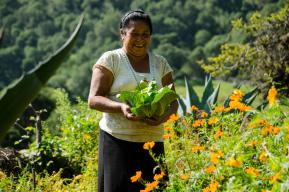News
Garba of Gujarat inscribed on the UNESCO Representative List of the Intangible Cultural Heritage of Humanity

Today, the Intergovernmental Committee for the Safeguarding of the Intangible Cultural Heritage inscribed ‘Garba of Gujarat’ on the Representative List of the Intangible Cultural Heritage of Humanity during its 18th session, taking place in Kasane, Botswana from 5 to 9 December 2023.
The inclusion of Garba now makes it India’s 15th inscription on the List.
A ritualistic and devotional dance performed throughout the State of Gujarat, and across India, Garba is celebrated for nine days during the festival of Navaratri. The festival is dedicated to the worship of the feminine energy or Shakti. The cultural, performative, and visual expressions of this feminine energy are expressed through the Garba dance. The performative and visual celebration of Garba takes place within homes and temple courtyards, public spaces in villages, urban squares, streets, and large open grounds. Garba thus becomes an all-encompassing participatory community event.
I offer my sincere congratulations to India, its people and the teams that worked on the nomination dossier. I hope this inscription helps ensure the viability of this tradition and inspires the community, particularly young people, to continue with the knowledge, skills and oral traditions associated with Garba.
Over the decades Garba has been an integral, multivalent component of Gujarati culture in India and among the Indian diaspora across the globe. Garba continues to be a vibrant living tradition. In addition to being a religious ritual, Garba fosters social equality by diluting socio-economic, gender, and rigid sect structures. It continues to be inclusive and participative by diverse and marginalized communities, strengthening community bonds.

The 18th session of the Intergovernmental Committee for the Safeguarding of the Intangible Cultural Heritage, hosted by the Republic of Botswana, is evaluating nominations submitted by States Parties for inscription on the Lists of the Convention, that include 45 elements for inscription on the Representative List of the Intangible Cultural Heritage of Humanity, 6 elements for inscription on the List of Intangible Cultural Heritage in Need of Urgent Safeguarding, 4 proposals for the Register of Good Safeguarding Practices and 1 International Assistance request.
Apart from ‘Garba of Gujarat,’ some of the new inscriptions include Rickshaws and Rickshaw painting in Dhaka from Bangladesh, Songkran in Thailand, traditional Thai New Year festival from Thailand, Hiragasy, a performing art of the Central Highlands of Madagascar, Junkanoo from the Bahamas, and the Procession and celebrations of Prophet Mohammed's birthday in Sudan, among others.
The Representative List of the Intangible Cultural Heritage of Humanity of the 2003 UNESCO Convention for the Safeguarding of the Intangible Cultural Heritage currently has some 704 elements corresponding to 5 regions and 143 countries. It includes forms of expression that testify to the diversity of intangible heritage and raises awareness of its importance. By enhancing the viability of communities’ cultural practices and know-how, UNESCO aims to safeguard the intangible cultural heritage of communities globally.









